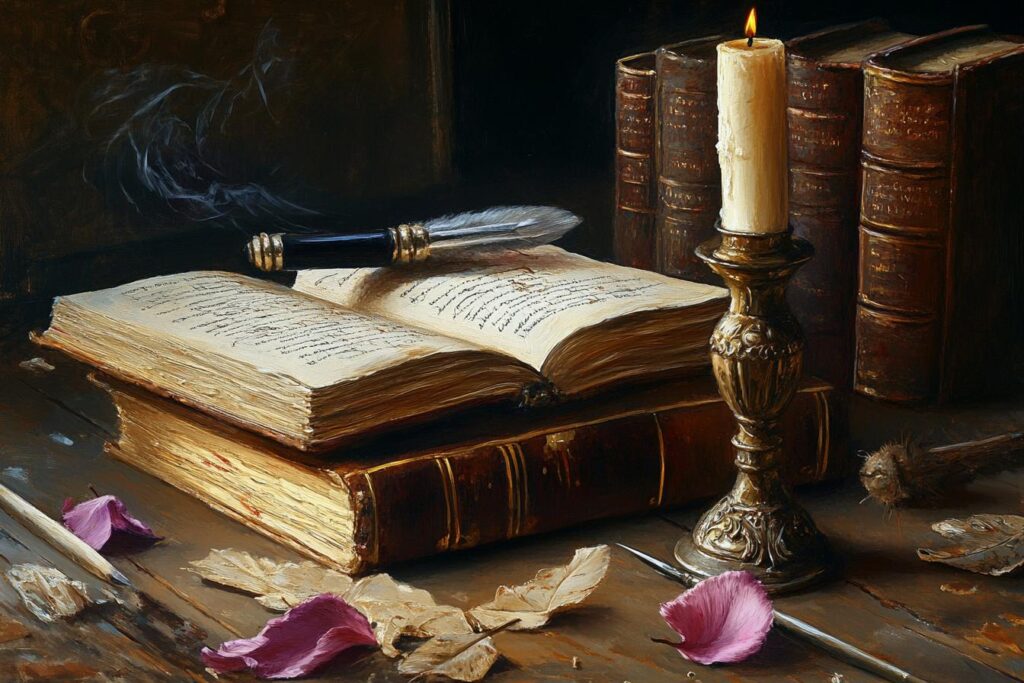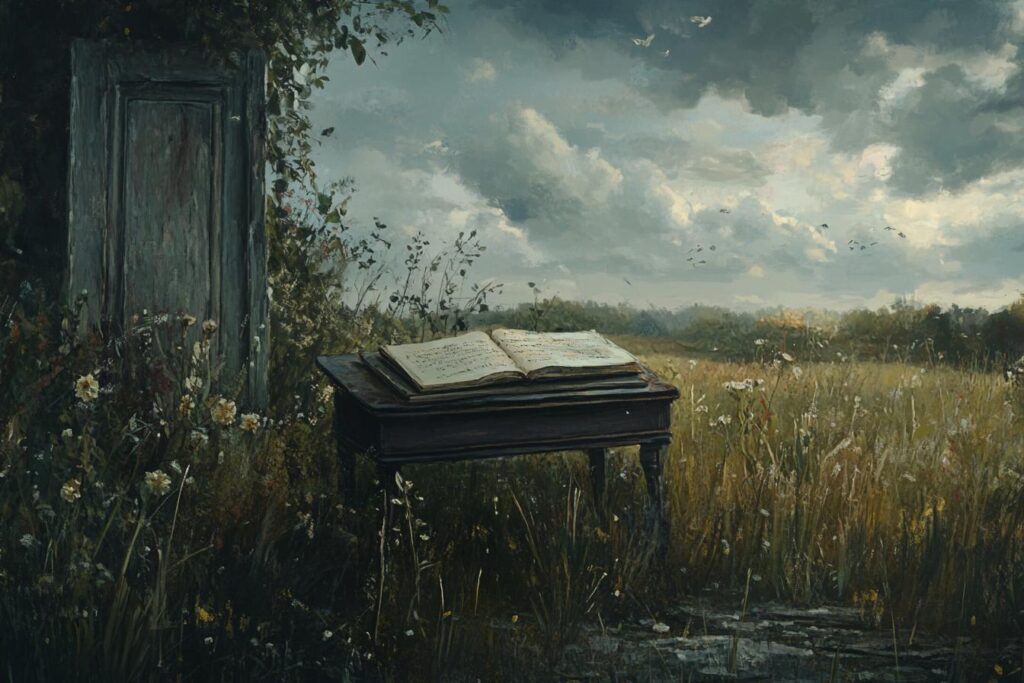
Night has long been a symbol of mystery, intimacy, and the unknown in poetry. In love poetry, the motif of night takes on a unique significance, often embodying the quiet moments shared between lovers before sleep, the longing felt during separation, or the peace found in the embrace of the night’s stillness. Good night poems, in particular, draw upon these nighttime themes to express affection, yearning, and the deep connections that endure even when lovers are apart. This article explores the importance of night motifs in love poetry, offering insights into their symbolic meanings, literary techniques, and emotional power.
1. Night as a Symbol of Rest and Reassurance in Love Poetry
In love poetry, the night is often associated with rest, calm, and the gentle comfort that comes at the end of the day. Good night poems reflect this sentiment, with lovers bidding farewell for the evening, offering words of reassurance, love, and safety. The quiet and peace of night become metaphors for emotional tranquility, where love provides a sense of security even in the darkness.
Example:
Robert Burns’ poem A Fond Kiss expresses the melancholy of parting at night, but the sense of love and longing lingers in the quiet of the evening. In these moments, the night allows for the tender exchange of goodbyes, filled with both sorrow and affection.
2. Intimacy and Distance: Night as a Time of Connection or Separation
Night can represent both physical and emotional closeness or the loneliness of separation. Good night poems often explore these dualities, where lovers may be lying side by side or parted by distance. When together, the night symbolizes intimacy and shared moments of quiet love, while when apart, it amplifies feelings of yearning, longing, and the desire for reunion. The promise of reuniting in dreams or in the morning serves as a comforting resolution.
Example:
In Pablo Neruda’s Tonight I Can Write the Saddest Lines, the night becomes a symbol of lost love and unfulfilled desires. The vastness of the night reflects the speaker’s sense of isolation, while the memories of past love echo in the darkness.
3. Night as a Metaphor for the Subconscious and Dreaming
Night is also linked to the world of dreams, where love can transcend the boundaries of reality. Good night poems often express the wish to meet a lover in dreams, where the constraints of time and space are irrelevant. In this way, the night serves as a metaphor for the subconscious, where desires, emotions, and fantasies can flourish. The concept of dreaming together becomes a powerful expression of unity and connection that transcends physical distance.
Example:
William Blake’s Auguries of Innocence contains the line “To see a World in a Grain of Sand,” which reflects the imaginative power of the mind. Similarly, in good night poems, the night opens up possibilities for lovers to connect beyond the limitations of the physical world through the shared experience of dreams.
4. The Duality of Darkness and Light: Transition from Night to Day
Night is often contrasted with day in love poetry, representing the tension between separation and reunion, or uncertainty and clarity. Good night poems capture this transition, as lovers move from the unknown of the night into the hope of a new day. Darkness can symbolize fear, doubt, or emotional conflict, while the dawn represents a fresh start, much like the morning in love poetry. The act of saying good night can be filled with the promise of renewal or the hope that love will endure through the night and into the morning.
Example:
In Alfred Lord Tennyson’s Now Sleeps the Crimson Petal, the night represents the peaceful surrender to love, while the anticipation of morning brings a sense of renewal. The poem’s sensual imagery of the night captures the depth of emotions that come alive in the stillness.
5. Literary Devices Used in Good Night Poems
To express the complex emotions tied to nighttime, poets use a variety of literary devices. These techniques help to evoke the quiet, reflective, and sometimes melancholic mood of night, as well as the love and connection shared between partners.
- Imagery: Poets use vivid descriptions of the night sky, moonlight, stars, and shadows to create a visual landscape that reflects the emotions of the poem. The stillness of the night often mirrors the calmness or emotional depth between lovers.
- Metaphor: Night is frequently used as a metaphor for love’s endurance, the mystery of the unknown, or the depth of feelings that emerge in solitude. It may also represent emotional protection, where the darkness shields lovers from the outside world.
- Personification: The night, stars, or moon may be personified to act as silent witnesses to the love shared between two people. This adds a sense of intimacy and timelessness to the poem, as if the celestial bodies are privy to the lovers’ secrets.
- Allusion: Many poets reference mythological figures associated with the night, such as the moon goddess Selene or the Roman god of sleep, Somnus. These allusions add layers of meaning to the poem, connecting personal love stories to universal themes of night and sleep.
6. Modern Interpretations of Night in Love Poetry
Contemporary poets have expanded the use of night motifs to include themes of personal reflection, self-love, and healing. Good night poems today might explore the comforting nature of solitude, the peace found in one’s own company, or the act of self-care before bed. While romantic love remains a central theme, modern poetry often embraces the night as a time for personal growth, emotional restoration, and introspection.
Frequently Asked Questions (FAQ)
Q: Why is the night such a popular motif in love poetry?
A: The night symbolizes intimacy, mystery, and reflection, making it an ideal backdrop for exploring themes of love, separation, and the deep emotional connections between people. Its stillness and quietness create the perfect environment for tender moments and vulnerability.
Q: How do poets use the motif of night in good night poems?
A: Poets often use night to convey feelings of closeness or longing, focusing on the quiet moments before sleep where love is most intensely felt. Night is also a time when lovers may part, making it a poignant symbol of both intimacy and distance.
Q: What literary devices are commonly used in good night poems?
A: Common literary devices include imagery (to describe the night sky, moon, and stars), metaphor (where night represents love’s endurance or mystery), and personification (giving human qualities to the night or celestial bodies).
Q: Can good night poems be about self-love or personal reflection?
A: Yes, especially in modern poetry, the night is often used as a time for personal reflection, healing, and self-love. These poems may focus on the peace of being alone with one’s thoughts before sleep or the emotional restoration that comes with nighttime solitude.
Q: How does the motif of night differ from the motif of morning in love poetry?
A: While morning is often associated with renewal, new beginnings, and hope, night typically symbolizes intimacy, mystery, and rest. Good night poems tend to be more reflective or emotional, while morning poems are often more optimistic and filled with promise.
Conclusion
The motif of night in love poetry offers a rich and multifaceted symbol for exploring the emotional depths of relationships. From the quiet intimacy shared between lovers to the longing felt in separation, the night serves as both a backdrop and metaphor for some of the most poignant and tender moments in love. As poets continue to draw on nighttime imagery to express connection, affection, and the mysteries of the heart, good night poems remain a powerful way to convey the enduring nature of love.


